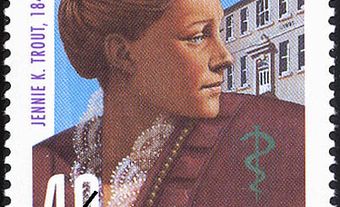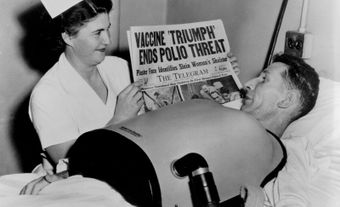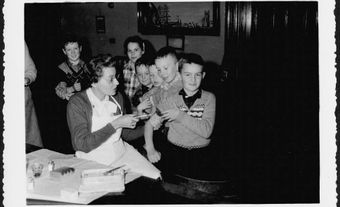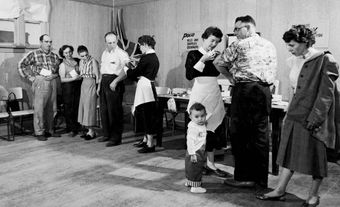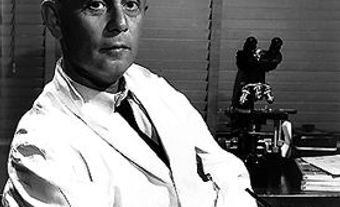Armand Frappier, CC, physician, microbiologist (born 26 November 1904 in Salaberry-de-Valleyfield, QC; died 17 December 1991 in Montréal, QC). Armand Frappier was a key figure in the fight against tuberculosis in Canada; he both produced the BCG (bacillus Calmette-Guérin) vaccine and advocated widespread vaccinations across the country. As founder and director of the Institut de microbiologie et d'hygiène de Montréal, he advanced medical research into infectious diseases and played an important role in the development of public health. (See also INRS-Armand-Frappier Santé Biotechnologie Research Centre.) He and his team produced a number of vaccines and other biological products (e.g., the anti-polio Salk vaccine, penicillin) and were responsible for freeze-drying blood serum for the armed forces during the Second World War. (See also Canada and the Development of the Polio Vaccine).

Education
Armand Frappier was inspired to research tuberculosis after his mother, younger brother, and grandmother all died of the disease. After receiving his MD (1930) and MS (1931) from Université de Montréal, Frappier won a scholarship from the Rockefeller Foundation (1931–32). He studied tuberculosis and the BCG (bacillus Calmette-Guérin) vaccine in the United States and at the Institut Pasteur in Paris, working in the Calmette, Guérin and Nègre laboratories. While the Institut Pasteur had developed the BCG vaccine, many American researchers were concerned about its safety. However, Frappier’s time at the institute convinced him that it was both effective and safe. When he returned home, he brought back a flask containing a strain of BCG and the knowledge necessary to produce the vaccine. He later returned to the institute in 1937 to study applications of immunology and anatoxins.
Career
In 1933, Armand Frappier became chief of the laboratories at Hôpital Saint-Luc and professor of bacteriology at Université de Montréal. That year, the National Research Council of Canada tasked him with confirming the effectiveness of the BCG vaccine and developing a safe method of producing it.
In 1938, he founded the autonomous, non-profit Institut de microbiologie et d'hygiène de Montréal (renamed Institut Armand-Frappier in 1975, and later the INRS-Armand-Frappier Santé Biotechnologie Research Centre), with the complementary goals of research, postgraduate and technical education, the provision of public health services, and the production and distribution of biological products such as vaccines (including the BCG vaccine). Frappier was the director of the institute until his retirement in 1974.
During the Second World War, Frappier and his team collaborated with the Department of National Defence and the Canadian Red Cross to manage the lyophilization (freeze-drying) of blood serum for the armed forces. He was later named an Officer of the Order of the British Empire (OBE) for his work during the war. In 1942, the institute produced the diphtheria, whooping cough, and tetanus (DPT) vaccine and the antibiotics gramicidin and penicillin. It provided vaccines and services to over 14 countries, as well as to all Canadian provinces, the federal government, the civil services and the armed forces.
Following the war, Frappier’s institute was involved in producing antibiotics such as penicillin and streptomycin for the civilian population. During the poliomyelitis epidemic of the 1950s, the institute created a virology department and by 1957 was able to produce the anti-polio Salk vaccine as well as the Asian flu vaccine. (See also Canada and the Development of the Polio Vaccine).
In 1945, Frappier founded the first French-language school of hygiene in the world at Université de Montréal, and was its dean from 1945 to 65.
Frappier was also involved in a vaccination campaign among First Nations communities during the 1940s and 1950s. In 1946, the federal government asked him to assess the feasibility of a vaccination campaign among First Nations in Ontario and Québec, who were suffering from a tuberculosis epidemic. During the 1940s, the death rate from tuberculosis among First Nations was over 700 deaths per 100,000 people (much higher than in the general population, which was around 100 per 100,000). Death rates were even higher at residential schools, reaching as high as 8,000 deaths per 100,000 children. From 1949 to 1952, Frappier visited the Waswanipi, Mistassini, and Manawan reserves to convince the populations to accept TB vaccination and to teach vaccination techniques to nurses (see Reserves in Quebec). While the vaccination campaign succeeded in eradicating the TB epidemic among those populations at the time, the rate of TB infection is still much higher among Aboriginal populations than in the general Canadian population.
Legacy
Armand Frappier was one of the first North Americans to confirm the safety and efficacy of BCG and to develop original studies and utilization methods for the vaccine. Another Canadian, Robert George Ferguson, also achieved international recognition for his pioneering work in BCG vaccination. Frappier, with his colleague Paul Lemonde and his daughter, Lise Davignon, showed for the first time a non-specific preventative effect of this vaccine in cases of infant leukemia. For years he studied the mechanisms of infection and of resistance (specific or non-specific) to certain infections. His Institut de microbiologie et d'hygiène de Montréal (now known as the INRS-Armand-Frappier Santé Biotechnologie Research Centre) continues its work in medical research, education, public health, and the production of biological products. After Frappier’s retirement in 1974, he was a consultant and professor emeritus of Université de Montréal.
Organizations and Awards
Armand Frappier was foreign associate of the Académie nationale de médecine de France, as well as president of the BCG committee of the International Union Against Tuberculosis, and a member of the expert panel on TB for the World Health Organization. Among other honours, he was a Companion of the Order of Canada, a Fellow of the Royal Society of Canada, Grand Officer of the Ordre national du Québec, an Officer of the Académie de France, and Officer of the Order of the British Empire. He also held honorary doctorates from Laval, McGill, and the universities of Paris, Montréal, Québec and Krakow. In 2000, Canada Post released a stamp in his honour: “Armand Frappier: Champion Disease Fighter.” He was inducted into the Canadian Medical Hall of Fame in 2012.

 Share on Facebook
Share on Facebook Share on X
Share on X Share by Email
Share by Email Share on Google Classroom
Share on Google Classroom
